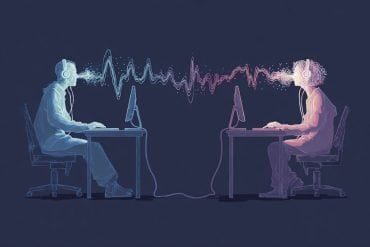Summary: A new study shows that combining touch with hearing profoundly intensifies emotional responses to music. Using a custom-built device that transforms sound into tactile vibrations, researchers found that people experienced more joy, connection, and reduced anxiety when they could both hear and feel the music.
The emotional impact was strongest when participants listened to songs they personally enjoyed, highlighting how multisensory input enhances emotional depth. The findings suggest potential applications for virtual reality, immersive entertainment, and therapies for anxiety and emotional regulation.
Key Facts:
- Tactile Enhancement: Feeling music through vibrations on the body amplifies enjoyment and positive emotions.
- Personal Connection: The effect is strongest when people choose music they already love, enhancing emotional resonance.
- Therapeutic Potential: The approach may reduce anxiety and could inform new multisensory therapies for mental health.
Source: Reichman Institute
A research team at the Reichman University Dina Recanati School of Medicine and the Baruch Ivcher School of Psychology has discovered that experiencing music in a multisensory way, combining both hearing and touch , significantly enhances people’s emotional responses to it.
The study, conducted at the Institute for Brain, Cognition and Technology, introduces a unique device that converts sound into tactile vibrations on the hands and body, offering listeners a new dimension of musical experience.
“What we see is that people respond differently to music that is also felt through the body,” says Naama Schwartz, PhD candidate and co-first author of the work.
“Imagine you’re at a concert of a band you love—your experience is inherently multisensory: you hear, you see, and you feel the vibrations. Our device captures part of that unified experience in a controlled way.”
Dr. Adi Snir, co-first author and senior researcher, explains: “The human tactile system is quite interesting in how it relates to sound. As humans we are capable of detecting vibration through the body though in a much more reduced frequency range than the auditory system.
“We had to develop an algorithm to convert streamed music to the correct frequency range in order to allow the experience of music through the hands and body to contain as much musical information as possible.”
The results were striking. Participants reported greater enjoyment and more positive emotions when music was both heard and felt. The effects were even stronger when listeners could select music they personally liked. Importantly, the study also found a reduction in anxiety, pointing to therapeutic potential.
The researchers see broad applications: from enhancing virtual reality and entertainment technologies to supporting mental health and emotional regulation through multisensory therapies.
As Dr. Snir explains: “With VR and haptic devices becoming more accessible, this opens up new avenues for creating enriched experiences, and for harnessing music’s therapeutic benefits.”
Professor Amir Amedi, head of the lab, notes: “When our brain receives matching signals across different senses, our attention is drawn more strongly to the experience. The auditory and tactile systems are particularly interconnected, which helps explain why the effect is immediate and powerful.
“This work is an important step into understanding not only the mechanisms enabling sensory integration, but how such integration can impact emotional states, and it’s broad therapeutic potential”.
Key Questions Answered:
A: When music is felt through vibrations as well as heard, it activates the brain’s multisensory integration systems, intensifying emotional responses.
A: Researchers developed a device that converts sound frequencies into tactile vibrations, allowing the body to “feel” the music in sync with auditory input.
A: Yes — beyond enhancing concerts and VR experiences, the approach may be used for anxiety reduction and emotional therapy through sensory integration.
About this music, sensory perception, and emotion research news
Author: Lital Ben Ari
Source: Reichman Institute
Contact: Lital Ben Ari – Reichman Institute
Image: The image is credited to Neuroscience News
Original Research: Open access.
“Feeling the music: exploring emotional effects of auditory-tactile musical experiences” by Naama Schwartz et al. Frontiers in Virtual Reality
Abstract
Feeling the music: exploring emotional effects of auditory-tactile musical experiences
Tactile pairing with auditory stimulation has been shown to enhance various capabilities, including the intensity of the stimulus, its location, and its comprehensibility in noise.
However the effect of adding haptics on emotional state is still poorly understood, despite the key role of bodily experiences on emotional states.
In the current study we aimed to investigate the impact of a multisensory audio-tactile music experience on emotional states and anxiety levels. For this purpose we developed an in-house algorithm and hardware, converting audio information to vibration perceivable through haptics, optimized for music.
We compare participants’ emotional experiences of music when provided with audio only versus audio-tactile feedback. We further investigate the impact of enabling participants to freely select their music of choice on the experience.
Results indicate multisensory music significantly increases positive mood and decreased state anxiety when compared to the audio only condition.
These findings underscore the potential of multisensory stimulation and sensory-enhanced music-touch experiences, specifically for emotional regulation. The results are further enhanced when participants are given the autonomy to choose the musical content.
We discuss the importance of multisensory enhancement and embodied experiences on emotional states.
We further outline the potential of multisensory experiences in producing robust representations, and discuss specific use cases for technologies that enable controlled multisensory experiences, particularly VR headsets, which increasingly incorporate multifrequency haptic feedback through their controllers and APIs.







